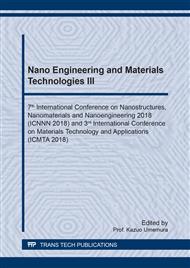p.137
p.142
p.148
p.155
p.160
p.167
p.173
p.178
p.185
Application of Minimum Quantity Lubrication for Drum High Clutch in Turning Process
Abstract:
The turning Process is the main processes used in automotive parts from more productivity, it requires the cutting velocity and feed rate high. And from those cutting, it causes high temperatures on cutting and a tool life of cutting tools decreased. Therefore using of cutting fluid (Coolant) is one of the commonly used methods to reduce temperatures that occur while cutting, reducing the wear of cutting tool and helps extend the tool life of the cutting tool. However, cutting fluid it's not always a good way, from the high cost and environmental problems issues. Using the MQL technique is one of the alternatives that using more nowadays to solve the above mentioned problems. This research proposed a MQL technique substitution of cutting fluid that using in the current process by applying in order to obtain the proper cutting condition for carbon steel material grade SAPH370 with the carbide cutting tool. The cutting conditions will acceptable from the minimum quantity of lubricant and the maximum of tool life of cutting tool under surface roughness (Ra) is less than 1.2 μm. The proper cutting condition determined at a feed rate of 0.10 mm/rev, a cutting speed of 300 m/min and a flow rate of 5ml/hr.
Info:
Periodical:
Pages:
160-166
Citation:
Online since:
March 2019
Authors:
Keywords:
Price:
Сopyright:
© 2019 Trans Tech Publications Ltd. All Rights Reserved
Share:
Citation:


